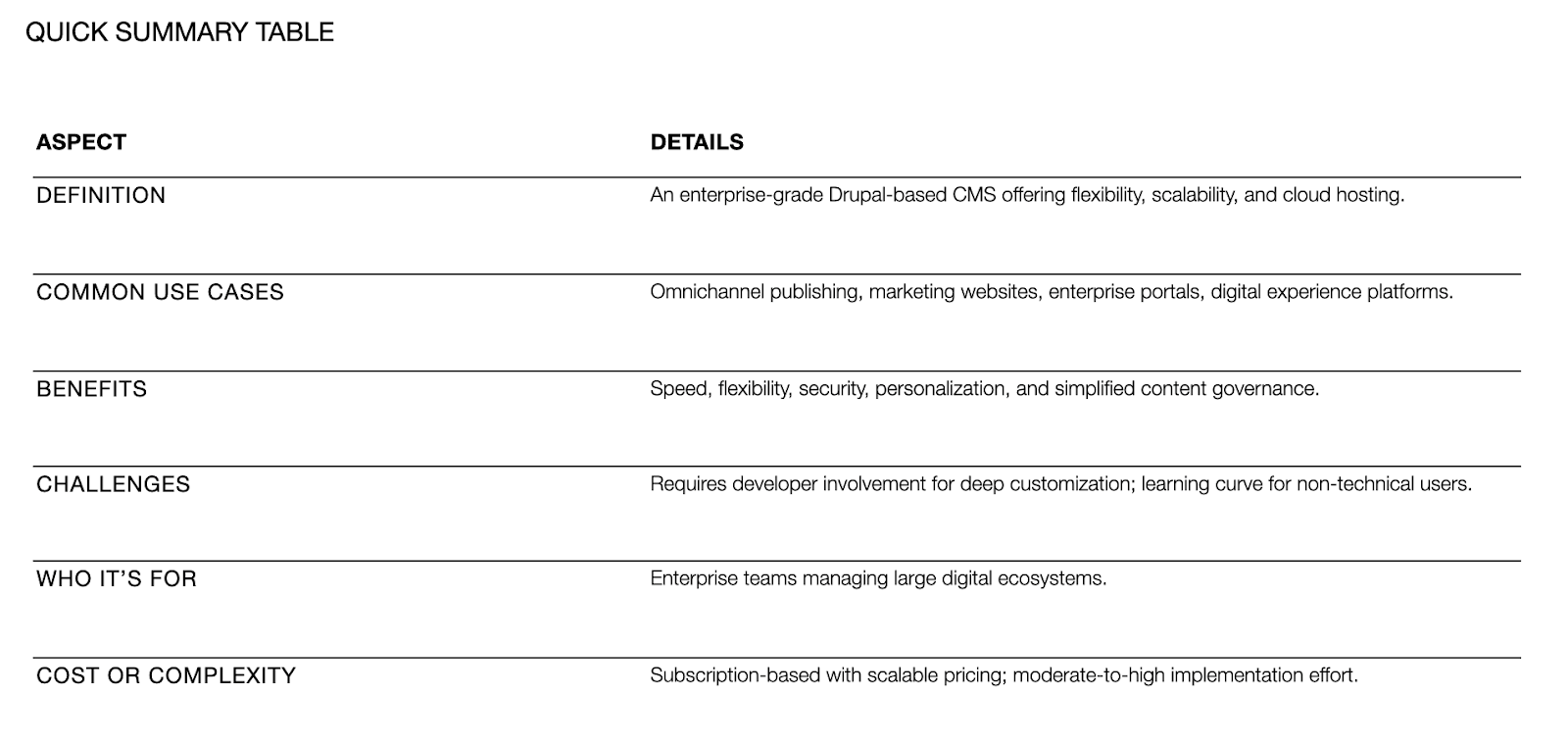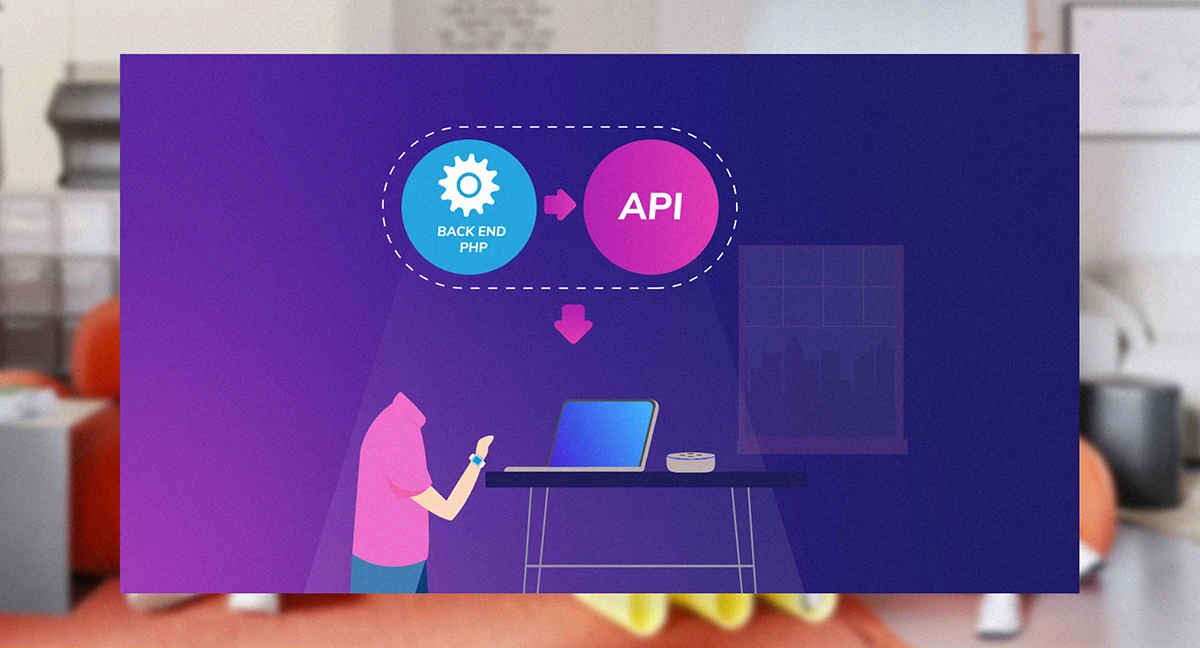
Acquia CMS FAQs | Headless Drupal CMS Platform Guide
Introduction
Enterprise brands are under mounting pressure to deliver faster, more flexible digital experiences while maintaining consistency and scalability. Many teams struggle with managing fragmented content systems or balancing marketing agility with IT control. The Acquia CMS platform offers a powerful solution built on Drupal, helping enterprises streamline content delivery across multiple channels.
This article breaks down the essentials of Acquia CMS, answering common questions about its structure, capabilities, and benefits. It’s written for directors, VPs, SVPs, and heads of digital, marketing, or technology departments at large enterprises seeking a unified, future-proof CMS. By the end, readers will understand how the Acquia Drupal CMS can help elevate their brand’s digital performance—and when to consider partnering with experts like G&Co. for implementation success.
Market Context: Disruption & Opportunity
Today’s enterprise content landscape is evolving rapidly. Traditional CMS platforms often struggle to keep up with omnichannel demands, personalization requirements, and integration complexity. Marketing and IT leaders face growing challenges when aligning speed with scalability and managing governance across global teams.
The rise of headless CMS architectures, such as Acquia headless CMS, represents a fundamental shift. These systems decouple content creation from presentation, giving brands greater freedom to publish content anywhere—websites, apps, or connected devices—without duplicating workflows.
As organizations aim to unify their content strategies and improve agility, the Acquia CMS platform provides a balance between structure and flexibility. It enables scalable digital ecosystems and integrates easily with enterprise tools, empowering teams to deliver seamless, data-driven customer experiences.
FAQs Snapshot

What is Acquia CMS?
Acquia CMS is an enterprise-grade content management system built on Drupal. It provides flexible tools for creating, managing, and delivering digital content across channels. Designed for marketing and IT collaboration, the Acquia Drupal CMS combines open-source freedom with enterprise-level support, scalability, and governance.
How does Acquia headless CMS work?
The Acquia headless CMS separates the backend content repository from the frontend presentation layer. This decoupled structure allows developers to deliver content through APIs to any digital experience—websites, mobile apps, or IoT platforms. The result is faster innovation, consistent brand messaging, and omnichannel flexibility.
What are the key Acquia CMS features?
Core Acquia CMS features include drag-and-drop content editing, advanced user permissions, multilingual support, API integrations, and cloud hosting. It also provides automated updates, security patches, and performance optimization tools that help enterprise brands stay agile and compliant across large digital ecosystems.
Why should enterprises use Acquia CMS Drupal?
Enterprises use Acquia CMS Drupal to gain scalability, control, and customization. It enables teams to manage content across global markets while supporting headless delivery models. The platform is particularly valuable for organizations that need to balance marketing independence with IT oversight and security.
What are Acquia CMS solutions for large organizations?
Acquia CMS solutions are designed to meet the needs of enterprises managing complex digital infrastructures. These include multisite management, personalization through Acquia Lift, and integrations with marketing automation platforms. Acquia’s cloud-native architecture ensures reliability, scalability, and high performance for enterprise environments.
What services does Acquia CMS offer?
Acquia CMS services encompass implementation support, managed hosting, security monitoring, and cloud infrastructure. Through its partnership ecosystem, enterprises can access strategic consulting, integrations, and optimization tailored to their goals. Partnering with firms like G&Co. ensures brands maximize value from these services through strategy-led execution.
Benefits of Acquia CMS
Enterprises adopting Acquia CMS benefit from faster time-to-market, improved scalability, and enhanced governance. Its modular design allows teams to build personalized experiences across multiple channels while maintaining control over brand assets and compliance.
The Acquia CMS platform simplifies collaboration between marketing and IT teams, enabling non-technical users to create content while giving developers the flexibility to innovate. Organizations also gain from seamless integrations with analytics, CRM, and marketing tools, creating a unified data-driven ecosystem that enhances customer experiences and ROI.

Let’s kickstart the conversation and design stuff people will love.

Deep-Dive Sections

What It Is & Why It Matters
The Acquia CMS platform builds on Drupal’s open-source foundation, combining flexibility with enterprise-grade security and support. It’s designed to give brands full control over their digital presence while ensuring scalability and compliance. For organizations needing to unify content creation and delivery across departments and markets, Acquia CMS solutions bring agility and structure together.
How It Works
Acquia headless CMS operates by decoupling the backend (where content is created and stored) from the frontend (where it’s displayed). This enables teams to deliver content through APIs to multiple interfaces. Developers can use any frontend framework—React, Vue, or Angular—while content editors work in a user-friendly Drupal environment. This architecture supports continuous innovation and omnichannel reach.
When to Use It (and When Not To)
Use Acquia CMS Drupal when your enterprise manages multiple digital properties, requires advanced governance, or needs flexible integrations with CRM and marketing systems. It’s ideal for organizations scaling their digital ecosystems or pursuing headless architecture. However, smaller teams or simple websites may find it more complex than necessary.
Integration or Setup Requirements
The Acquia CMS platform integrates seamlessly with enterprise software such as Salesforce, Adobe Analytics, and Marketo. Implementation typically involves aligning taxonomy, permissions, and workflows. Partnering with a consulting firm like G&Co. can help streamline this process—ensuring integration efficiency, security, and minimal downtime.
Scalability & Flexibility
Acquia CMS services are built for scale. Whether you manage hundreds of sites or millions of visitors, its cloud infrastructure automatically adapts to demand. The system’s modular design supports continuous feature additions without disrupting core performance, making it a preferred choice for global enterprises expanding digital footprints.
Alternatives or Comparisons
While many CMS platforms offer headless functionality, Acquia Drupal CMS stands out for its open-source flexibility and enterprise support. Unlike closed SaaS systems, Acquia allows full customization and data control. Competitors like Adobe Experience Manager or Sitecore may offer similar capabilities, but Acquia provides a more developer-friendly and cost-effective ecosystem.
How G&Co. Can Help

At G&Co., we help enterprise brands unlock the full potential of Acquia CMS solutions through strategic consulting and implementation expertise. Our team bridges strategy, design, and technology—guiding organizations through every stage of their CMS transformation.
We’ve partnered with global brands to modernize digital platforms, integrate headless architectures, and deliver seamless omnichannel experiences. With deep knowledge of Acquia CMS features and enterprise integration best practices, G&Co. ensures your investment translates into measurable performance and long-term scalability.
Talk to us to clarify your CMS strategy and move forward with confidence.
Conclusion & Next Steps
The Acquia CMS platform gives enterprise leaders the tools to unify content operations, deliver personalized experiences, and scale their digital ecosystems with confidence. Understanding its features, architecture, and services helps teams choose the right path forward—whether through in-house builds or strategic partnerships.
At G&Co., we’ve worked alongside enterprise clients to implement similar transformations—modernizing customer experiences, streamlining operations, and driving measurable impact. Still have questions? Reach out and let’s solve them together.






%20(1).png)






